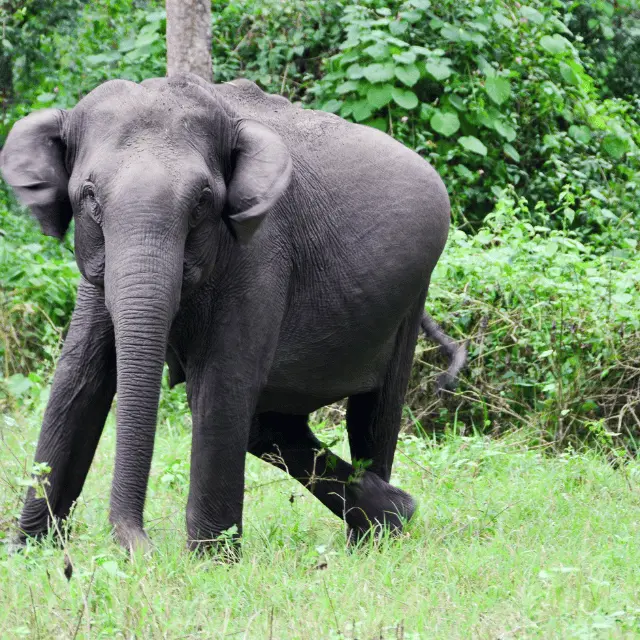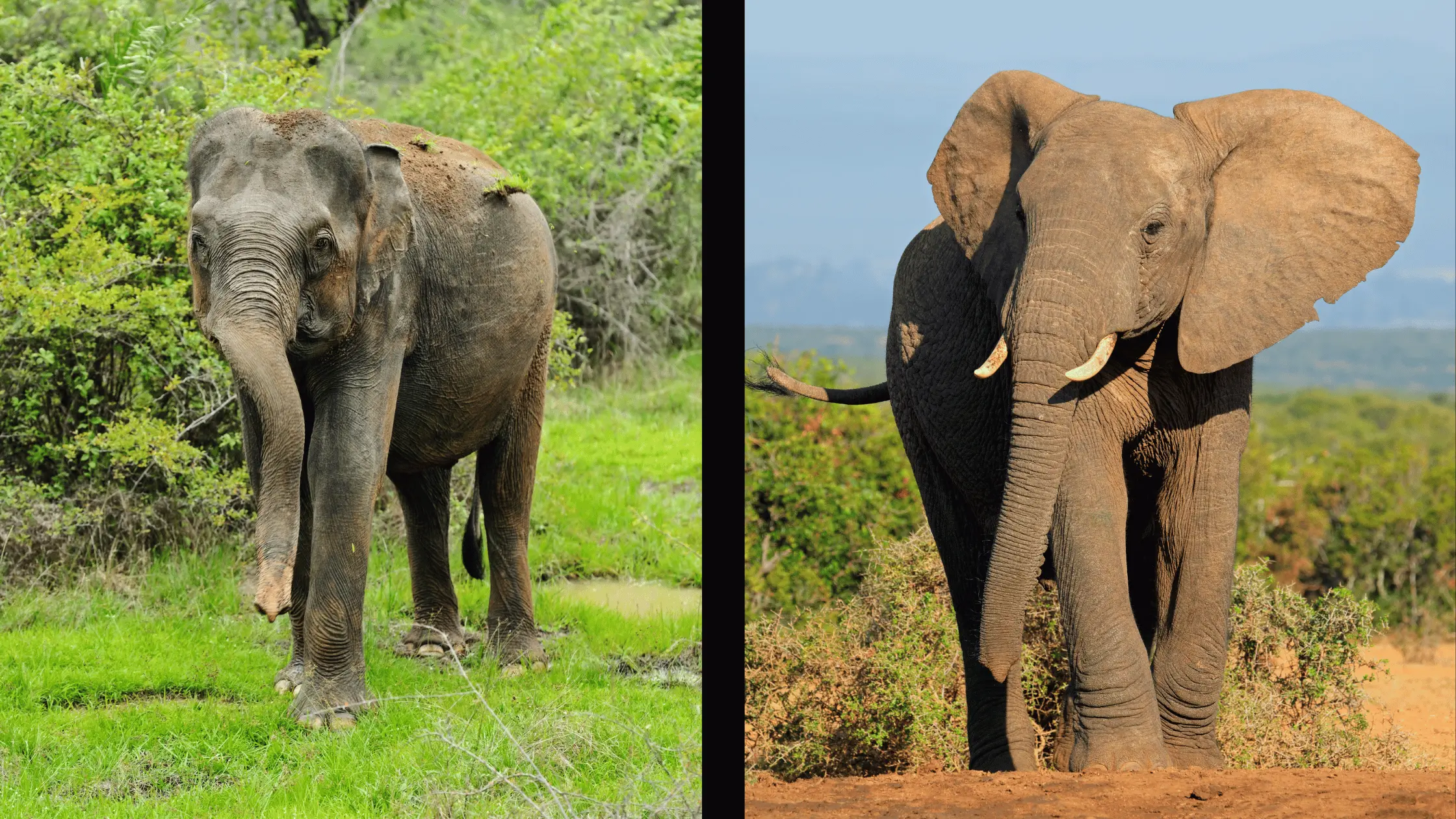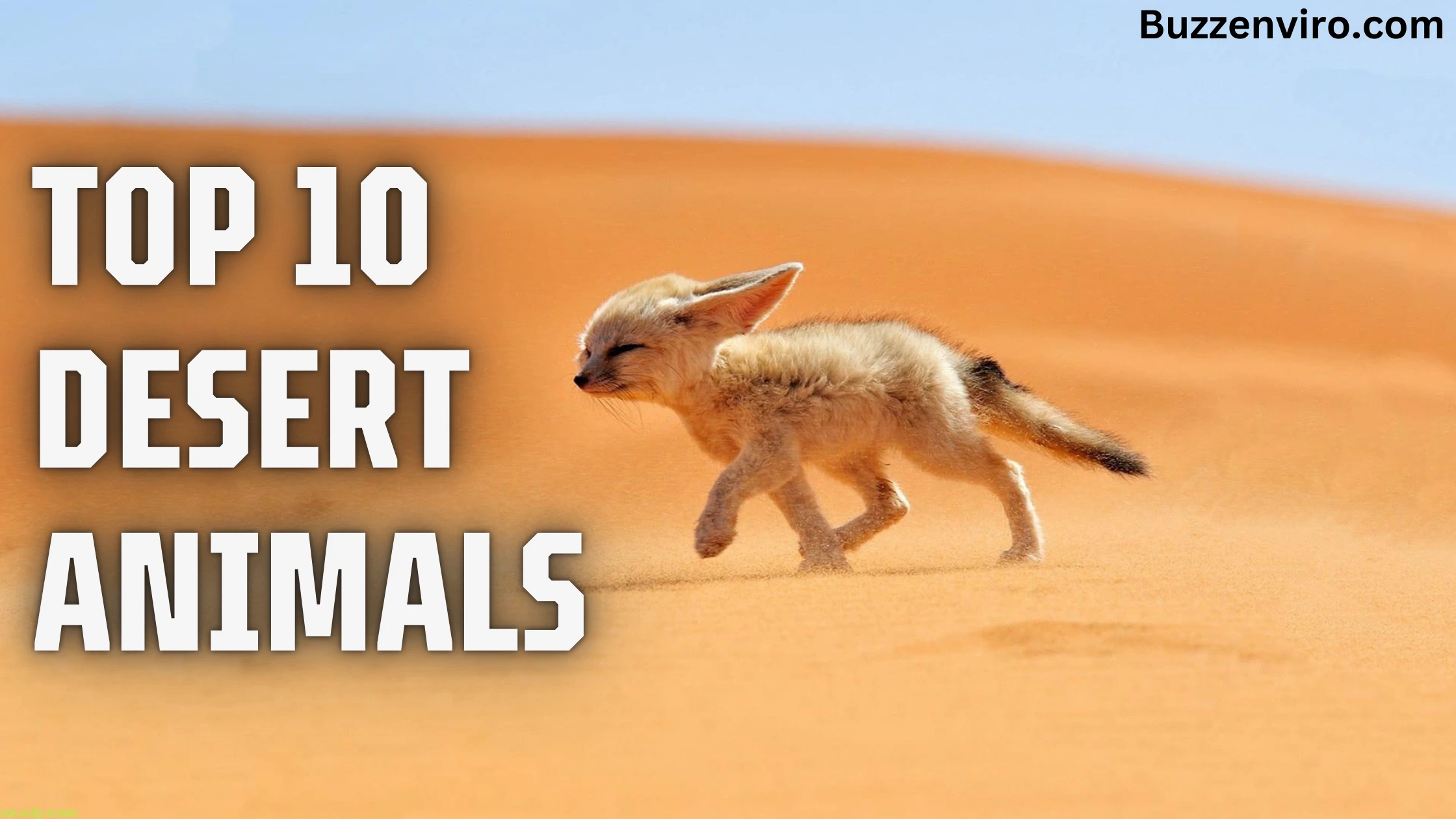Elephants are amazing animals that many people love. Have ever wondered about the Indian Elephant Vs African Elephant? They’re both big and fascinating, but they’re also different in some cool ways!
Imagine a giant animal walking through the forest or the grasslands. That’s the Indian Elephant, found mainly in places like India. Then there’s the African Elephant, living in places like Kenya and Tanzania, wandering across the vast savannas.
In this blog, we’ll take a fun journey to learn about these two types of elephants Indian Elephant Vs African Elephant. We’ll talk about where they live, how they look, and how they behave. By the end, you’ll know a lot more about these incredible creatures and what makes them special! Let’s get started!
Difference Between Indian Elephant and African Elephant
1. Habitat
The Indian Elephant (Elephas maximus indicus) primarily inhabits the forests and grasslands of the Indian subcontinent. From the lush jungles of Kerala to the foothills of the Himalayas, these elephants have adapted to a diverse range of ecosystems.
The African Elephant (Loxodonta africana) roams the savannas, forests, and grasslands of Africa, spanning diverse countries such as Kenya, Tanzania, Botswana, and South Africa. Their vast range reflects the continent’s diverse ecosystems.
2. Physical Features

Indian elephants are slightly smaller in size compared to their African counterparts. They typically stand between 6 to 10 feet tall at the shoulder and weigh anywhere from 4,000 to 11,000 pounds. One distinguishing feature of the Indian Elephant is its smaller ears, which are proportionate to its body size.

African elephants are the largest land animals on Earth. They can reach heights of up to 13 feet at the shoulder and weigh between 5,000 to 14,000 pounds. One of the most striking features of the African Elephant is its large, fan-shaped ears, which help dissipate heat and regulate body temperature in the hot African climates.
3. Tusks
Both male and female Indian elephants may possess tusks, although they are generally smaller in size compared to African elephants. These tusks are used for various purposes, including digging, lifting objects, and defense.
Both male and female African elephants typically possess tusks, which can grow to impressive lengths. These tusks are highly sought after, leading to rampant poaching and illegal trade. Conservation efforts are underway to protect these magnificent creatures and combat the ivory trade.
4. Behaviour
Indian elephants are known for their social nature, often forming close-knit family groups led by a matriarch. They communicate through a complex array of vocalizations, body language, and tactile signals. Due to habitat loss and fragmentation, conflicts between humans and elephants have become increasingly common, posing a threat to both the elephants and local communities.
African elephants also exhibit complex social structures, living in herds led by a matriarch. These herds can consist of dozens of individuals, ranging from females and their offspring to solitary bulls. African elephants are renowned for their intelligence, emotional depth, and strong familial bonds.
Did you Know Which is India’s Tallest elephant?
Thechikottukavu Ramachandran is India’s tallest elephant that is 10.53 ft tall and weighs 24000 Pounds.
Conclusion
While the Indian Elephant and the African Elephant share certain similarities, such as their social nature and herbivorous diets, they also possess distinct differences in terms of habitat, physical features, and behavior. Both species face significant threats, including habitat loss, poaching, and human-wildlife conflict. Conservation efforts aimed at protecting these iconic creatures are crucial for ensuring their survival for future generations to admire and cherish. As stewards of our planet, it is our responsibility to safeguard these majestic giants and preserve their habitats for years to come.




